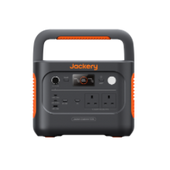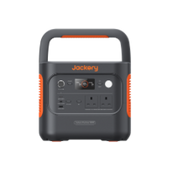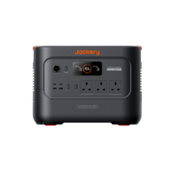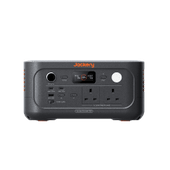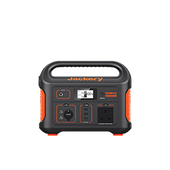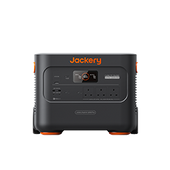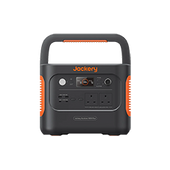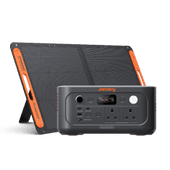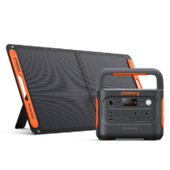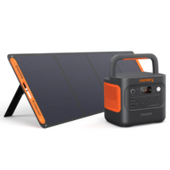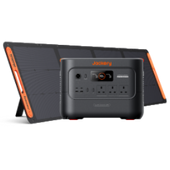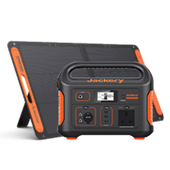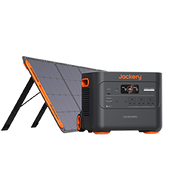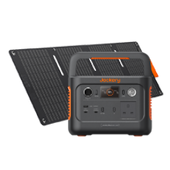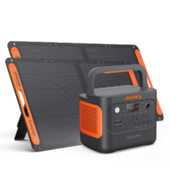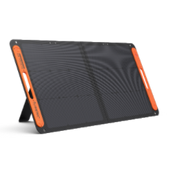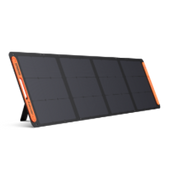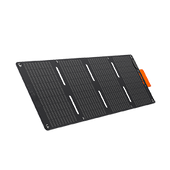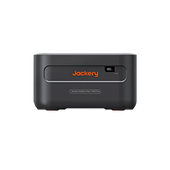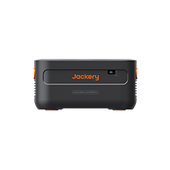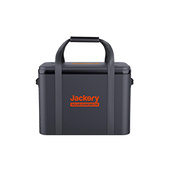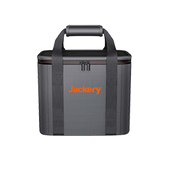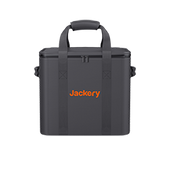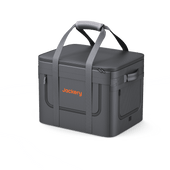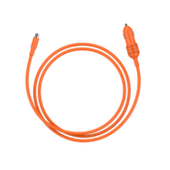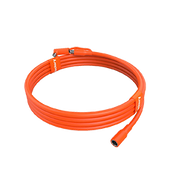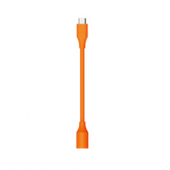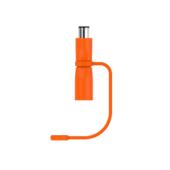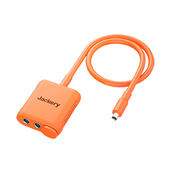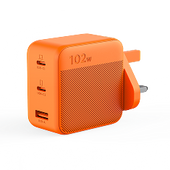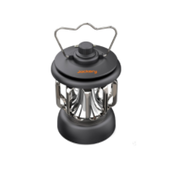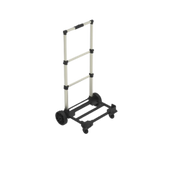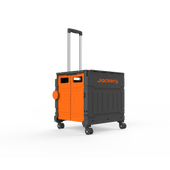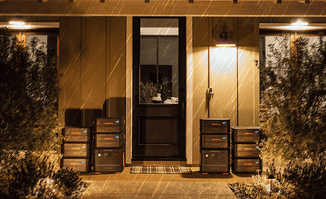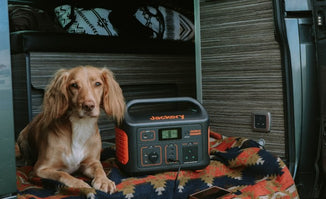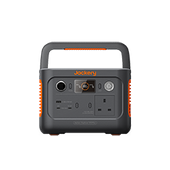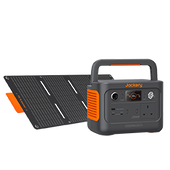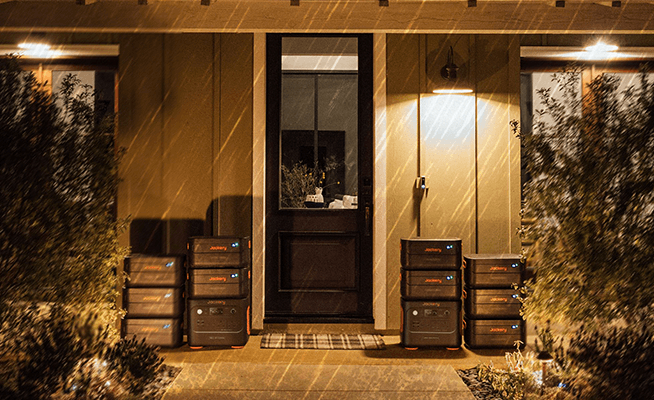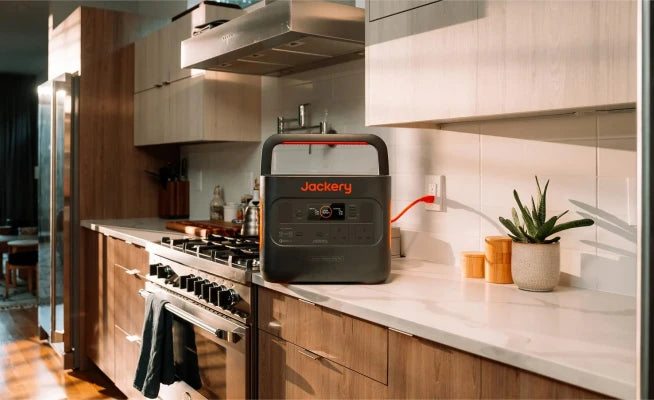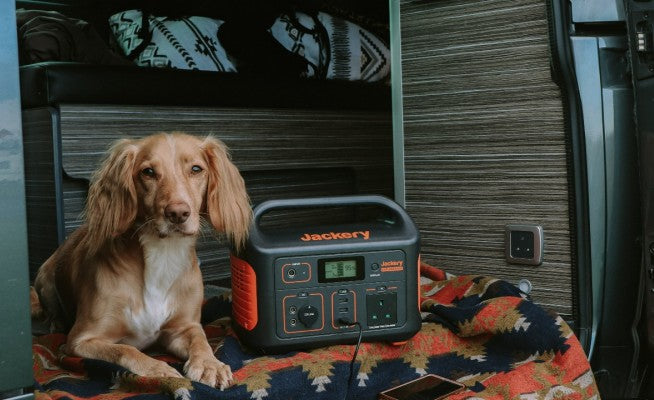Solar energy tracking technology lets solar panels follow the sun as it moves, which helps them capture more sunlight and makes the whole system work better. Solar trackers are a great way to boost solar power generation in the UK, where the weather can vary rapidly and sunlight is always abundant.
They do this by changing the angles of the panels during the day and year. This technique is beneficial for ground-mounted solar arrays in the commercial and agricultural sectors, as it allows them to capture more energy from the sun than fixed systems.
Solar tracking is becoming a more practical alternative for improving renewable energy production across the UK as costs decrease and new technologies make trackers more reliable.
|
Key Takeaways: |
|
What Is Solar Energy Tracking and How Does It Work?
Solar energy tracking is a system that moves solar panels to stay in the sun's path, which gives the panels the most direct sunlight possible during the day. These panels are not fixed in place; they are installed on tracking devices that change their angle and location to keep them in the best position to catch the sun's rays.
There are two basic kinds of solar tracking systems: single-axis and dual-axis. Single-axis trackers follow the sun from east to west. Dual-axis trackers move both horizontally and vertically to follow the sun all day and all year. Dual-axis systems are designed to capture even more sunlight, especially in winter when the sun is lower in the sky.
There are both active and passive tracking systems. Active trackers employ motors, gear drives, and sometimes GPS data to move the panels exactly as the sun moves. Passive trackers, on the other hand, use thermal expansion in gases or fluids to move the panels without needing any electricity.
Linear actuators, slewing drives, and rotary kinds are some of the driving mechanisms in these systems. They let the system move in a dependable and repeatable way. These tracking systems are strong enough to handle changing weather, such as wind and rain. Solar trackers are becoming more popular in the UK because they may improve the effectiveness of solar panels even when it's cloudy or dark.
Both homes and businesses have used the technology, but where trackers work best frequently depends on how much room is available, how much the system costs, and how easy it is to maintain. Solar tracking systems are a means to significantly increase the amount of solar energy collected on larger solar farms or open-field installations without the need for additional panels.
Types of Solar Trackers Explained: Single Axis vs Dual Axis
To choose the best solar system for your installation, you need to understand the various types of solar trackers available. All solar tracking systems aim to maximise energy capture from the sun, but they operate in very different ways and can capture significantly different amounts of sunlight. In the UK, where the weather and amount of daylight change with the seasons, choosing the proper sort of solar tracker can have a significant effect on how much electricity you get.
What Are the Main Types of Solar Trackers?
Solar trackers are broadly divided into two types: single-axis and dual-axis devices. Each has its unique mechanical configuration and is intended to accommodate various project sizes, budgets, and performance objectives.
What Is a Single-Axis Solar Tracker?
A single-axis tracker enables solar panels to revolve on one axis, often tracking the sun from east to west throughout the day. This mobility enhances energy generation over stationary systems by aligning panels with the sun's daily arc. These systems are simpler, less expensive, and commonly employed in bigger, utility-scale solar projects where land space is less of an issue.
In the United Kingdom, single-axis trackers can provide substantial performance benefits, particularly during long summer days, and they are mechanically simpler than dual-axis counterparts, making them easier to install and maintain.
What Is a Dual-Axis Solar Tracker?
Dual-axis trackers can rotate on both horizontal and vertical axes. This means they can track the sun throughout the day and adjust to seasonal variations in its height. As a result, dual-axis systems can maintain the optimal angle of incidence of sunlight on the panel surface all year round.
These systems are especially beneficial in regions where sunlight angles vary significantly throughout the year, such as the United Kingdom. They produce the most energy compared to fixed or single-axis systems, but they are more mechanically complex and often more expensive to install and operate.
Which Is Better for the UK Climate?
Dual-axis trackers are more efficient in the UK due to the low winter sun and changing seasonal angles, which allow them to capture more sunlight during the short daylight hours. For most household or medium-sized projects, single-axis trackers may provide a better balance of cost, performance, and upkeep.
System selection is frequently influenced by project goals, budget, space availability, and desired return on investment, particularly given the UK's relatively diffuse and uneven sunshine compared to sunnier countries.
The Role of Solar Trackers in Residential and Commercial Installations
Solar trackers are a vital new technology that helps solar photovoltaic systems harness the most energy from the sun. These systems enable solar panels to capture more light by changing the angle of the panels throughout the day to follow the sun's path.
This is especially helpful in places like the UK, where the weather and seasons change the amount of sunshine. Solar energy tracking systems are no longer just for big commercial farms. They are becoming more affordable and easier to use for homes as well.

How Solar Trackers Maximise Solar Efficiency?
Solar trackers boost energy generation by constantly changing the position of the panels to ensure they remain perpendicular to the sun's rays. This alignment improves solar irradiance exposure, which increases electricity generation. Single-axis trackers can raise energy output by 10-25%, and dual-axis trackers can increase it by 40% or more, depending on location and conditions.
In the United Kingdom, the sun's angle varies not only daily but also seasonally. Dual-axis trackers are handy during the winter months, when the sun is lower in the sky. Maintaining ideal orientation can significantly increase daily and annual energy yields as compared to fixed-mount systems. According to industry data, solar panels with trackers routinely produce more energy than static configurations, particularly in the early morning and late afternoon.
Energy Gains in Cloudy and Low-Light Conditions
While many people believe that solar tracking is only helpful in sunny climates, solar trackers can also enhance efficiency in the UK's cloudier environment. Even in dispersed light, a panel with a better angle to the sky can absorb more solar radiation than one in a fixed horizontal position. This makes tracking devices particularly beneficial for optimising light capture on short, overcast winter days in the UK.
Can Solar Tracking Be Used in Residential Settings?
Residential solar tracking systems are becoming more practical due to component miniaturisation and modular design. Homeowners with a large roof, open land, or ground-mounted solar systems can benefit from trackers, particularly single-axis models that combine performance and cost.
Installing a tracker on a small ground-mounted system may provide measurable long-term benefits to UK households with limited roof space or who rely on high-efficiency generation for return on investment. Some systems are now built for easy installation and low maintenance, making them more suitable for home use.
Limitations to Consider For Home Use
However, solar trackers are more effective for ground-mounted systems than rooftop arrays. Rooftop tracking installations are uncommon in the UK because of weight, structural constraints, and cost. Furthermore, the increased initial cost and possibility for mechanical maintenance may not be appropriate for all households. Trackers can provide significant benefits in instances when energy yield is a primary goal, such as off-grid residences, distant cottages, or properties with low grid feed-in tariffs.
Understanding the Cost of Solar Trackers in the UK
Many homeowners and business owners in the UK are thinking about whether or not it makes sense to buy solar energy tracking systems as solar energy becomes increasingly common.
Solar trackers can help you save money in the long run and make your energy use more efficient, but the initial cost is still one of the most essential elements to think about. Before purchasing a solar tracking system, it is necessary to understand how the prices are determined and what factors influence them.

What Is the Average Price of a Solar Tracker in the UK?
The cost of a solar tracker in the UK varies based on the type of system installed (single or dual axis) and the size of the solar array. According to current UK market data, a single-axis tracking system typically adds 10-20% to the total cost of a solar installation, whilst a dual-axis tracker might add 30-50% or more.
Prices vary depending on brand, design intricacy, and whether the installation is residential, commercial, or agricultural. For ground-mounted systems, particularly those with bigger arrays, the greater initial tracker cost may be mitigated by improved performance over time.
Cost Breakdown By Type: Dual-Axis vs. Single-Axis
Single-axis trackers are less expensive and simpler in design. They follow the sun from east to west, increasing generation without adding considerably to system complexity. They are generally more cost-effective for most UK situations and are frequently used in agricultural or rural installations.
Dual-axis trackers revolve on two planes to follow the sun both daily and annually. They provide the most significant potential for efficiency gains, but are more expensive to purchase and install, and require more maintenance due to their increased complexity. Dual-axis systems are frequently more viable in commercial solar farms or research applications when maximal production is needed and budgets can tolerate the additional cost.
Installation and Maintenance Costs
Beyond the purchase price, installation expenses can vary depending on site conditions such as terrain, foundations, and local manpower. Because trackers have moving parts, constant maintenance is a significant concern; dual-axis systems, in particular, may necessitate additional attention to ensure smooth functioning over time. In many circumstances, long-term efficiency gains can outweigh these higher expenses, especially in environments that require continuous energy output year-round.
Drive Types and Mounting Systems for Solar Trackers
When selecting a solar energy tracker, it's essential to understand the different types of motors and their mounting requirements, as these factors significantly impact the system's performance, longevity, and compatibility with specific UK installations.
What Are the Common Drive Types for Solar Trackers?
Solar trackers typically utilise electric, hydraulic, or mechanical drives to adjust the position of the panels throughout the day. Electric drive systems use motors to gently rotate the panels, providing precise control and seamless connection with automated solar tracking controllers.
Hydraulic drives use fluid pressure to move panels; however, they are less prevalent because of the increased maintenance requirements. Mechanical drives use gears or chains attached to actuators for movement and are frequently simpler, but they lack the fine-tuning precision of electric systems.
Fixed vs. Tracking Mounting Systems
Ground-mounted frames designed to accommodate movement along one or two dimensions are among the available solar tracker mounting solutions. These mounts must be strong enough to handle UK weather conditions, such as wind and rain, while also being flexible enough to allow for seamless tracking.
Ground mounts with single-axis rotation are often simpler and less expensive than dual-axis mounts, which require more robust construction to support movement in two planes. Rooftop tracker mounting is unusual owing to structural limitations and space constraints.
Impact of Drive and Mounting Choices on Installation
The type of drive you choose affects how hard it is to install and how much maintenance it will need in the future. Electric drives are often preferred because they are reliable and easy to integrate into monitoring systems.
At the same time, the way you mount the drives must be tailored to the site's terrain and environmental conditions to ensure long-term stability and performance. In the UK, where the weather can be unpredictable, sturdy mounting frames and weather-resistant parts are necessary to keep the drives running efficiently and for a long time.
Summary of Considerations for UK Installations
Choosing the appropriate drive type and mounting technique requires balancing cost, dependability, maintenance, and site-specific requirements. Electric drive systems, together with strong ground mounts, are widespread in UK solar tracker installations due to their mix of precision and durability. Hydraulic or mechanical drives are suitable for specialised applications, although they are less common due to maintenance or performance concerns.
Is Solar Energy Tracking Worth It in the UK?
Solar energy tracking technology is becoming more popular with both homeowners and businesses as the UK continues to invest in renewable energy. But because the weather in this nation is so unpredictable and the days are so short, a lot of people ask if solar trackers are worth the money.
Trackers give measurable benefits by changing the angle of the panels to gather more solar energy during the day. However, whether they are worth the investment in the UK depends on several cost, space, and climate variables.

Increased Energy Yield Even in Low-Light Conditions
Solar tracking systems can significantly increase the amount of electricity generated, especially in places like the UK where the sun is not always visible. Single-axis trackers can increase production by 10–25%, but dual-axis systems can enhance performance by 30–40%, particularly in the early morning and late afternoon when the sun is low.
In the UK, where the number of hours of sunshine varies with the seasons and is often obstructed by clouds, trackers are more effective at recording irradiance than stationary systems because they can always position their panels in the optimal direction. This benefit is significant in the winter, when fixed panels don't get as much sun and the sun's angle is low, so they don't produce as much energy.
Costs of Solar Trackers in the UK
Installing solar trackers in the UK does incur additional upfront expenditures. These include increased equipment costs, additional structural support, and periodic mechanical maintenance. According to UK-based research, a dual-axis tracker system can cost between 30 and 50% more than a fixed configuration. However, single-axis trackers are often less expensive but still add a premium to the project.
However, the enhanced efficiency may eventually outweigh the initial expense, particularly for larger installations or those trying to maximise revenue from a restricted area. In rural properties or solar farms, the cost-to-performance ratio can frequently justify the additional investment, particularly when combined with energy storage or grid feed-in programs.
Factors That Influence Cost-Effectiveness
Several key factors influence the cost-effectiveness of a solar tracking system in the UK. Tracking systems generate more energy, which is more useful for larger installations, such as those used in business or farming. This makes the investment more beneficial. The kind of tracker you choose also matters.
Single-axis systems are usually cheaper and easier to maintain, while dual-axis versions provide more energy but cost more to purchase and maintain. The location is also essential; areas with more consistent sunlight, especially in the southern parts of the UK, will do better. The total price can be affected by the difficulty of installation, the terrain, and the availability of government incentives.
Higher electricity costs and export tariffs can also contribute to improved financial returns. Still, it is also essential to consider the ongoing maintenance demands and the long-term reliability of moving parts. These things together decide if a tracking system is a good investment for a specific project.
When Is Solar Tracking Most Worthwhile?
Solar tracking is especially valuable in the UK for users with extensive outside areas, significant energy consumption, or a desire to maximise system performance year-round. For residential customers, the value may be in long-term sustainability, battery storage optimisation, or off-grid resilience rather than immediate ROI.
Solar trackers can make a significant financial impact in commercial or agricultural installations, where space is more available and energy savings compound on a large scale.
Jackery Solar Generators Explained
The Jackery Solar Generator is not just a single product; it's a complete, integrated system that combines a Jackery Portable Power Station with its compatible SolarSaga solar panels. The importance of this "solar generator" concept lies in its ability to provide a clean, portable, and reliable source of power that is self-sufficient and independent of the traditional electrical grid.
The primary importance of the Jackery Solar Generator is its use of clean, renewable solar energy. By converting sunlight into electricity, it provides a power solution that produces zero emissions, noise, or fumes. This makes it a sustainable alternative to noisy, polluting, and fuel-dependent gasoline generators.
Jackery Solar Generator 3000 v2
The Jackery Solar Generator 3000 v2 is a powerful, integrated home and outdoor power solution. It combines the advanced Jackery Explorer 3000 v2 portable power station with Jackery's high-efficiency SolarSaga 200W solar panels to create a self-sufficient energy system. This "solar generator" concept is designed to provide a clean, quiet, and reliable source of power for a wide range of applications, from home backup to off-grid living.

3,072Wh Capacity: The Explorer 3000 v2 at the core of this system has a substantial 3,072Wh capacity, which can keep essential home appliances running for extended periods. For example, it can power a full-sized refrigerator for several hours or keep a Wi-Fi router and lights on for days.
3,600W Continuous Output (7,200W Peak): With a powerful 3,600W output, it can handle high-wattage devices like electric kettles, power tools, and even a window air conditioner, making it a versatile solution for home emergencies or outdoor events.
Long-Lasting: The LiFePO4 (Lithium Iron Phosphate) battery provides a remarkable lifespan of over 4,000 charge cycles before its capacity drops to 70%. This translates to a decade or more of reliable daily use, ensuring a strong return on your investment.
Ultra-Fast Charging: The power station can be fully recharged from a standard wall outlet in a remarkable 1.8 hours. This is crucial for quickly preparing for an emergency. When paired with Jackery SolarSaga solar panels, the Explorer 3000 v2 can accept up to 1,000W of solar input, allowing it to recharge from 0 to 100% in as little as 3.5 hours under optimal conditions.
Jackery Solar Generator 2000 v2
The Jackery Solar Generator 2000 v2 is a comprehensive, all-in-one portable power solution designed to provide clean, silent, and reliable energy for home backup, outdoor activities, and off-grid living. It's not a single product but a system composed of the Jackery Explorer 2000 v2 Portable Power Station and Jackery's high-efficiency SolarSaga 200W solar panels.

Capacity: The core Explorer 2000 v2 unit has a 2,042Wh capacity, which is enough to run essential appliances like a refrigerator for over a day, a Wi-Fi router for more than 50 hours, or a TV for over 25 hours.
Output: With a continuous 2,200W production and a 4,400W surge peak, it can handle most common household appliances and power tools, from microwaves and coffee makers to drills and angle grinders.
Rapid AC Charging: The power station can be fully charged from a wall outlet in as little as 1.7 hours, or even faster with its Emergency Super Charging mode. This is crucial for quick preparation before a storm or for rapid turnaround between uses.
Efficient Solar Charging: When paired with Jackery's SolarSaga solar panels, the unit can be fully recharged in as little as 5.5 hours (with two 200W solar panels) under ideal sunlight conditions. This makes it a truly self-sufficient power source.
Exceptional Durability: The LiFePO4 (Lithium Iron Phosphate) battery chemistry provides a significantly longer lifespan compared to older technologies, rated for over 4,000 charge cycles before the capacity drops to 70%. This means the unit can last for over a decade with daily use, ensuring a long-term return on your investment.
Jackery Solar Generator 1000 v2
The Jackery Solar Generator 1000 v2 is a compact and highly versatile power system that combines the Jackery Explorer 1000 v2 portable power station with Jackery SolarSaga 100W or 200W solar panels. It's designed to be a powerful and portable solution for home backup, off-grid adventures, and professional use.

1,070Wh Capacity: At the heart of the system is a 1,070Wh LiFePO4 battery, providing enough energy to run essential devices for hours or even days. This is sufficient to power items like a mini-fridge for over 12 hours, a Wi-Fi router for more than 100 hours, or a TV for several hours.
1,500W Continuous Output (3,000W Surge): The power station delivers a strong 1,500W of continuous power, which is a 50% increase from the previous model. This allows it to handle a wide array of appliances, including coffee makers, microwaves, and power tools, making it a reliable solution for various situations.
Emergency Super Charging: The standout feature is its ability to be fully charged from a wall outlet in as little as 1 hour via "Emergency Super Charging" mode, or 1.5 hours with its standard AC input. This rapid charging capability is crucial for last-minute preparations in the event of a power outage.
High Solar Input: When paired with Jackery's SolarSaga solar panels, the unit supports up to 400W of solar input, allowing it to recharge in as little as 4 hours under optimal sunlight. This makes it an ideal option for off-grid power generation.
Portability: Weighing around 23.8 lbs (10.8 kg), the 1000 v2 is 18% smaller and 10% lighter than industry standards for a 1kWh battery. It also features a foldable handle for easy transport, making it highly portable for camping, RV trips, or moving around the house.
The Present and Future of Solar Energy Tracking in the UK
In the UK, solar energy monitoring is getting a lot of attention as a new technique to increase the performance of solar PV. But how well does it actually function in the country's environment, and what does the future hold for this technology?
Solar Tracking in the UK Climate: Does It Really Work?
Despite the UK's frequently gloomy and unpredictable weather, solar trackers can boost energy generation by altering panel angles to optimum exposure even under diffuse sunlight circumstances.
According to studies, single-axis trackers can increase electricity generation by 10-25% over the course of a year, and dual-axis trackers can increase output by up to 40% under ideal conditions. However, the performance advantage varies depending on location, weather patterns, and system design, with trackers outperforming in sunny months and areas.
Because of the UK's latitude, the sun's position changes dramatically between seasons, and solar trackers assist panels in maintaining a more direct angle to sunlight throughout the day and year, enhancing efficiency even on days with less direct sunshine.
Solar tracking is a feasible addition for larger ground-mounted solar farms and commercial projects due to its versatility. Still, its benefits for smaller or rooftop systems remain limited by space and installation constraints.
Is Solar Energy Tracking the Future of Solar PV in the UK?
The UK wants to increase the amount of renewable energy it produces, and solar tracking is seen as a good way to do that while using as little land as possible. Trackers can increase yearly energy production, resulting in higher returns on investment, particularly in business and farming.
Solar trackers are becoming more affordable as technology advances and equipment costs fall, while integration with intelligent monitoring systems enhances their durability and ease of maintenance. As the UK attempts to maximise renewable energy output in the face of changing weather patterns, solar monitoring technologies may become increasingly common in new installations.
Fixed solar panels, on the other hand, will continue to dominate household and small-scale installations due to their cheaper cost, simplified maintenance, and ease of installation. Solar PV in the UK is likely to take a hybrid approach, with solar tracking employed selectively in projects where efficiency advantages justify the additional expense.
FAQs
The following are frequently asked questions about solar energy tracking in the UK:
1. Is the solar tracking system worth it?
In the UK, solar tracking systems can be worth the money, especially for big or commercial solar installations. They can boost energy output by 25% to 40% by keeping panels perfectly aligned with the sun's path. But they might not be worth the money for smaller or residential settings, where fixed panels typically work just fine because they cost more to buy and maintain.
2. How do you track solar energy?
Solar trackers are machines that move solar panels to follow the sun's position during the day. They keep track of solar energy. These trackers employ sensors, motors, and control systems to automatically change the angle of the panels so that they get the most sunlight and make the most energy possible compared to panels that don't move.
3. What is the cost of the solar tracking system?
In the UK, solar tracking systems can make a solar installation cost 10% to 50% higher, depending on whether they employ single-axis or dual-axis trackers. The price includes the mechanical parts, the difficulty of installation, and the cost of continuous maintenance. This makes trackers a bigger upfront investment than fixed panel systems.
4. What does Martin Lewis say about solar panels?
Martin Lewis, a consumer expert in the UK, suggests that solar panels can be a worthwhile investment for many homes, as they help reduce electricity bills and are environmentally friendly. However, he warns people to consider the costs of installation, the available subsidies, and whether their home is a suitable candidate for solar panels to ensure they receive a good return.
Final Thoughts
Solar energy tracking is a big step forward for solar photovoltaic technology. It gives you more energy and a better return on investment in the UK's harsh climate. Although the initial cost and maintenance needs are higher than those of fixed systems, the efficiency improvements, especially for larger installations, may make these trade-offs worthwhile.
Residential users prefer simpler fixed panel configurations since they are easier to use and less expensive. But because prices are going down and new ideas are always coming up, solar tracking will likely be a big part of the future of solar power in the UK.



